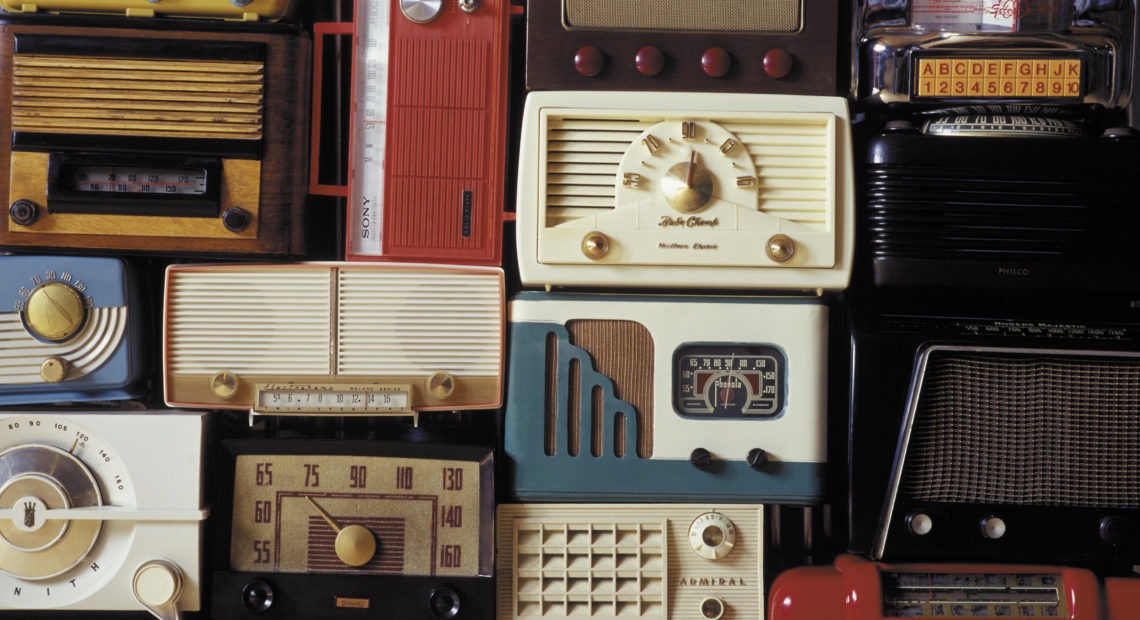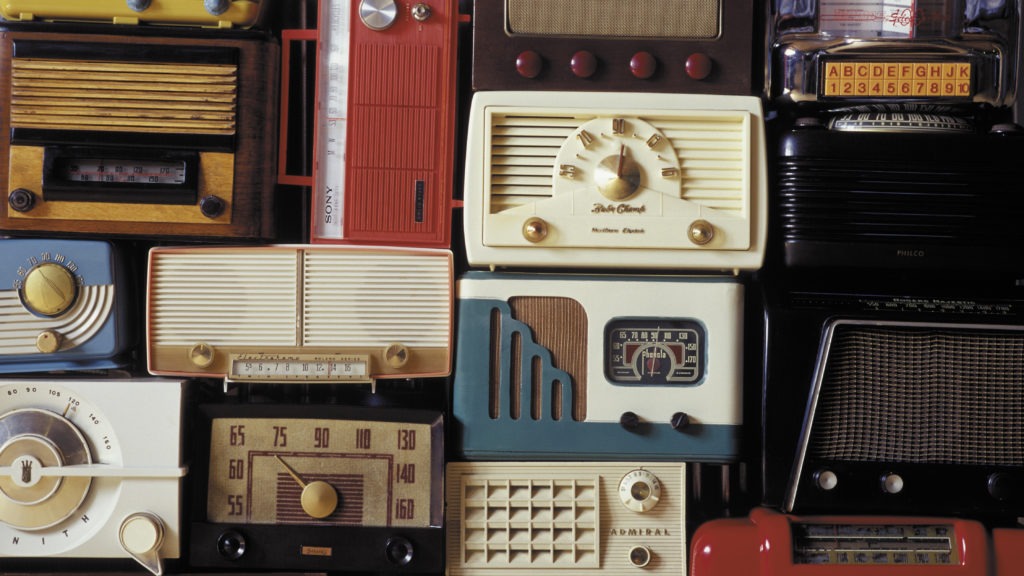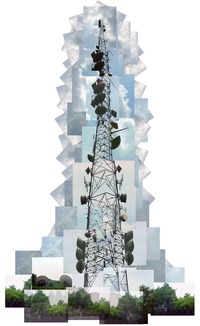
New Proposal Looks To Loosen Radio Ownership Rules, Benefiting Big Companies
BY MARISSA MOSS
If you’re a country artist who dares to have a political opinion in the cautious world of Nashville, you’re certain to hear a familiar refrain. “Be careful,” you’ll be warned. “You don’t want to get Dixie Chicked.”
What this has come to mean, almost two decades later, is that speaking out about one’s political beliefs is a surefire way to have your songs expunged from the radio, as was the case with the Dixie Chicks when they made anti-George W. Bush comments on stage in England in 2003. But what’s often left out of the Dixie Chicks’ mythology is that their “cancellation” wasn’t caused by the independent minds of programmers across America rebelling on their own free will – it was a direct product of consolidation, of many bullhorns being held by the same hand, and the power that bestows.
When the Telecommunications Act of 1996 became law, it loosened regulations on how many stations a single company could own, and allowed the purchase of multiple stations in a single market, depending on that market’s size. Clear Channel (now known by the much softer, snuggly name iHeartMedia) was a beneficiary of the new rules, able to rapidly grow from 40 stations to 1,240 by 2002, later dictating to them from the top down that the Chicks be removed from rotation.
Though discussions about the impact of radio consolidation and the Telecommunications Act have faded since then, a new proposal on local ownership

A collection of vintage radios. CREDIT: Greg Huszar/Getty Images/First Light
could change the face of AM/FM radio forever – and empower a whole new generation of current and future broadcasters of any genre to “Dixie Chick” a song or artist from the airwaves, for whatever reason they choose.
Spearheaded by the National Association of Broadcasters (NAB), the proposal — raised during the FCC’s every-four-year assessment of media ownership laws, called the Quadrennial Review — could make the concept of “local radio” nearly extinct, say several groups opposing it.
The NAB’s proposal calls for weakening current rules on how many radio stations a company can own in a given place, allowing large broadcasters like iHeart and Cumulus, the first and third-largest radio companies in the U.S., or even smaller regional broadcasters, to swallow up almost every station in their state — or, sometimes, all of them. NAB’s proposal would allow the purchase of up to 10 FM stations, with no cap on AM stations, in any market in the top 75 (as measured by Nielsen), with no ownership limits for markets outside of the top 75. Right now, a single entity can own up to eight within a large market, and between five and seven in smaller markets. If any given entity wants to purchase every single remaining AM and FM station in a market outside of the top 75 (there are 194 of them), there will be nothing to stop them, should the proposal be approved.
The NAB’s argument is that, in the era of streaming, radio needs an aggressive approach to stay alive. But artist-centric advocacy and lobbying groups like Future of Music and musicFirst argue that loosening these regulations could actually be radio’s final death knell — or at least local radio as we (increasingly don’t) know it. And as President Trump’s appointees to the FCC are largely in favor of deregulation, this proposal is on track to become a reality through what could be a long and arduous process: with the comment period closed, the FCC will now order a decision, but “parties who do not like the FCC’s decision can file a petition for reconsideration or lawsuits challenging the FCC in court,” says Yosef Getachew of watchdog group Common Cause. And many are already mobilizing for that legal fight.
Back in the time of the Dixie Chicks’ exile from the mainstream, artists were outspoken when it came to educating their fans on the dangers, as they saw it, of media consolidation. In 2003, Tom Morello, Billy Bragg and Steve Earle launched the 13-city Tell Us the Truth tour, with the aim of doing just that. “What’s happening is that Clear Channel is a great hulking Frankenstein monster gobbling things up,” Bragg said at one of the concerts, as reported by the New York Times. Morello told the Boston Globe that “there’s a very narrow number of gatekeepers, and that can be very destabilizing for a democracy.” And, though organizations like Future of Music warn this new proposal could be an even bigger blow with more “gobbling,” the discourse has generally been lost in the sphere of public interest. There’s only so much bandwidth to go around, after all.
“It’s tough to exaggerate what a disaster [the Telecommunications Act] was for the radio industry,” says the writer Eric Boehlert, who covered radio consolidation extensively back in the early 2000s for Salon.

A collaged radio tower. CREDIT: Steven Puetzer/Getty Images
During a Communications and Technology Subcommittee hearing on Accountability and Oversight of the FCC, held in May, Representative Frank Pallone, Jr. of New Jersey addressed the NAB’s proposal in his opening statement: “Over the last two years, this FCC has too often turned its back on the public, putting the big corporate interests first … It slashed media ownership rules to allow the biggest media companies to grow even larger, controlling more and more of the news and entertainment that reach Americans.”
That control could lead to an even greater lack of diversity of content, which is already apparent in numerous segments of radio, from rock to country, where women are increasingly being squeezed out. According to a study by Dr. Jada E. Watson, in consultation with WOMAN Nashville, women already comprise a minute portion of country airplay: Gender Representation on Country Format Radio: A Study of Published Reports from 2000-2018 quantified the disparity as 11.3%. On Billboard’s current Alternative Songs chart, there would be scant women artists if it weren’t for the takeover of teen sensation Billie Eilish and SHAED’s ‘Trampoline,’ the first number one from a woman-fronted band in 16 years – which are more of an aberration than the norm. And there are no solo women on the current top 20 of Billboard‘s Rock Songs chart, either.
If these ownership laws are loosened even further, argues Kevin Erickson of Future of Music, you end up with “fewer and fewer remaining protections for diversity.” Because of the proposed regulations, markets outside of the top 75 — like Chattanooga, Tenn., Springfield, Mo., Madison Wis. and El Paso, Texas — could be owned by a single entity. And while larger conglomerates like iHeart, Cumulus and Westwood are most often roused in this discussion, it’s medium and smaller-size programmers that worry Trevor Francis of musicFirst (iHeart, somewhat surprisingly, is arguing against the deregulation proposal), as it raises the potential of future “mini-iHearts around the country,” as he puts it. That could result when regional broadcasters purchase as many stations as they can in a given market where there are zero restrictions on ownership. A regional broadcaster could, for example, purchase every single market within a state and have complete control over what every resident outside of a major city hears through their car stereo.
And as stations swallow up others, that means more net financial risk for the owners – and thus less risk in what they play, in the interest of appealing to as broad an audience as possible.
“The easiest thing to do when you have more stations is to be as homogenous as possible,” says Boehlert. “And when you have debt [as iHeart media does, having filed for bankruptcy last year], you can’t take any risks. So even if a station does go down a point, they can say, ‘well, it’s not our fault, because we were as homogenous as possible.’ ”
What is the lowest risk when it comes to airplay? More often than not, whoever is white and male. In a reply comment filed on May 31, musicFirst and other coalitions studied the sale of multiple country stations from Citadel (at the time the third-largest radio station owner in the country) to Cumulus in 2011 – and noticed that plays of songs by women were reduced by 34.7% after the sale. “Female artists (and therefore female perspectives) on these stations were already underrepresented before the sale, and have been even further underrepresented since,” the comment reads.
The impact of heavy media consolidation can also be found on our local television stations. Back in March, the sports site Deadspin discovered something alarming happening amongst local anchors across America: they were all reciting the same script about fake news, with canned lines about how the current journalism landscape is “dangerous to democracy.” Turns out, the story was a content package that originated from Sinclair Broadcast Group, who sent the script to the nearly 200 local television stations that they own (a result of rapid growth made possible by the Telecommunications Act) in order to promote a conservative agenda. For the average viewer, it just seemed like a message delivered from the folks they trust most – the people who live in their community, bringing them the latest traffic reports and the weather. Similarly, when it comes to radio, most listeners have no reason to question the programming choices of whatever is being pumped through the car speakers. It’s hard to discern whether or not these decisions are being made from an office in New York or just down the block.
“It will lead to less and less local content, and less and less accessibility,” says Erickson. “Less decisions made at the local level, and more consolidated playlists.”
But loosening these ownership caps could have deeper ramifications when it comes to penalties for artists who choose to speak openly about political and social issues – again, just look as far as the Dixie Chicks to be reminded of the power of a unified programming decision. And though it lies in the television realm, Les Moonves of CBS was reported to have effectively stalled Janet Jackson’s career after her controversial Super Bowl appearance.
But most of the time, this censorship is not as overt as what happened with the country trio.
“The popular understanding of how censorship happens in practice imagines artists dramatically getting booted off the air for expressing points of view,” says Erickson. “Censorship usually happens in more subtle and insidious ways, with songs and artists that never make it on the air in the first place. A corollary effect is that artists with career paths dependent on radio gatekeepers face powerful incentives to self-censorship, to create work that doesn’t rock the boat or expresses views in only oblique ways.” In other words, art that manages to get past radio gatekeepers has already been neutralized or made “safe,” otherwise it wouldn’t have gotten to airwaves to begin with.
“As things trend towards more and more consolidation, a move like this can accelerate our risk-averse nature. The opportunities to potentially get airplay at all become fewer and fewer, and more and more limited to work that fits into these narrow formats,” says Erickson.
What you hear on the radio right now is already a product of consolidation, with top-down mandates dictating what program directors on stations across the country play. An iHeart station, for example, has a significant portion of their playlists controlled by programs like the new-artist initiative “On the Verge.” So if you tune into a local iHeart, you’ll hear those artists – not chosen by your local station, but by programs in cities that are states away. These are often referred to as consolidated playlists, or centralized programming, and they are common practice.
For iHeart, an initiative like On the Verge requires stations to play the designated song for a set number of spins across a six-week span. This is also often tied into iHeart-related events in any particular market. These centralized programing initiatives aren’t simply in response to who an audience is resonating with on a local level — they also serve the reverse, inflating plays on an artist as a result of preset campaigns.
“Radio would like to be known for playing what people want to hear most, but that’s not necessarily the case and certainly isn’t the full picture,” says the advocacy group WOMAN Nashville, who consulted on Watson’s study. “A substantial amount of what comes through our speakers is less of a reflection of what listeners love and more of mutually beneficial deals that have been made behind closed doors.”
Often there are other “mutually beneficial deals” that determine how many times an artist might be played in a particular market – exchanging an artist’s time at a station for plays, or even sporting event tickets, gifts or other offerings on the outskirts of payola (again, Boehlert was charting this back in 2001 for Salon). Much of this also goes back to the makeup of the tastemakers themselves: primarily white and primarily male, from the executive level down. But it’s often also more intentional, according to Boehlert.
“If you control ‘X’ number of country playlists, you aren’t adding artists to your playlist out of the goodness of your heart,” says Boehlert. “Those playlists are simply an asset to be bought and sold. If one company owns all the stations, that creates much more incentive for shady practices and pay-for-play.”
It’s also, as Boehlert puts it, “a disaster” for the artists themselves. While there are many ways for artists to make a living without the support of radio, a lack of airplay is directly related to their ability to profit from those other means, or even reach local fan bases who might buy tickets to a concert. A program director in New York or Chicago will never be as in-tune with whatever is bubbling in the roots scene in Tulsa or hip-hop in Houston, and it will be increasingly difficult for artists to build that local buzz without any organic local radio support.
“It used to be that you could go to the local station, drop off your new single and have your community hear it,” says Erickson.
Artists are already stifled financially when it comes to AM/FM radio – they don’t receive royalties when a song is played (this is something that Future of Music and musicFirst are actively working to change, despite many years of the NAB’s successful lobbying in the other direction), so the benefits from airplay are much more indirect. It helps build audiences and promote shows, and leads to the visibility necessary for top-line booking at festivals, sponsorships and other means of income generation.
The NAB has argued that radio’s financial health is at stake if this proposal doesn’t pass and the industry declines to “modernize.” But though it is seeing struggles in line with most facets of the music industry as they struggle to catch up to a streaming climate, the role of radio is still incredibly vital, particularly for those in lower income brackets who don’t have access or income for reliable WiFi, or in rural areas, where radio is a primary source of entertainment and news. And though the NAB is lobbying hard, the list of groups opposed to the changes is increasing: Free Press, the National Association of Black Owned Broadcasters, the MultiCultural Media, Telecom and Internet Council, the National Hispanic Media Coalition, the Leadership Conference on Civil and Human Rights, as well as numerous broadcasters among them. Likely to be challenged in court continuously on its road to FCC approval, the proposal could even be one of the issues held in the balance of the 2020 Presidential election.
“There is hope in the long run that if we make media diversity a major talking point, a future administration could be responsive to that,” says Dr. Joshua Shepperd, Assistant Professor of Media and Communication at The Catholic University of America. “We don’t have to give up on the most utilized medium.”
With a Senate Commerce subcommittee hearing scheduled for June 12 but no clear date as to when the FCC will review the docket, organizations like Future of Music, musicFirst and other music advocacy groups are left to wait and see, and to suggest that radio’s way through the streaming climate is not by consolidating, but by finding new avenues to appeal to a rapidly changing music consumer who wants more customization, localization, diversity and personalization — not less. And, someday, more Dixie Chicks.
“Consolidation is not the answer,” says Francis. “Innovation is.”















